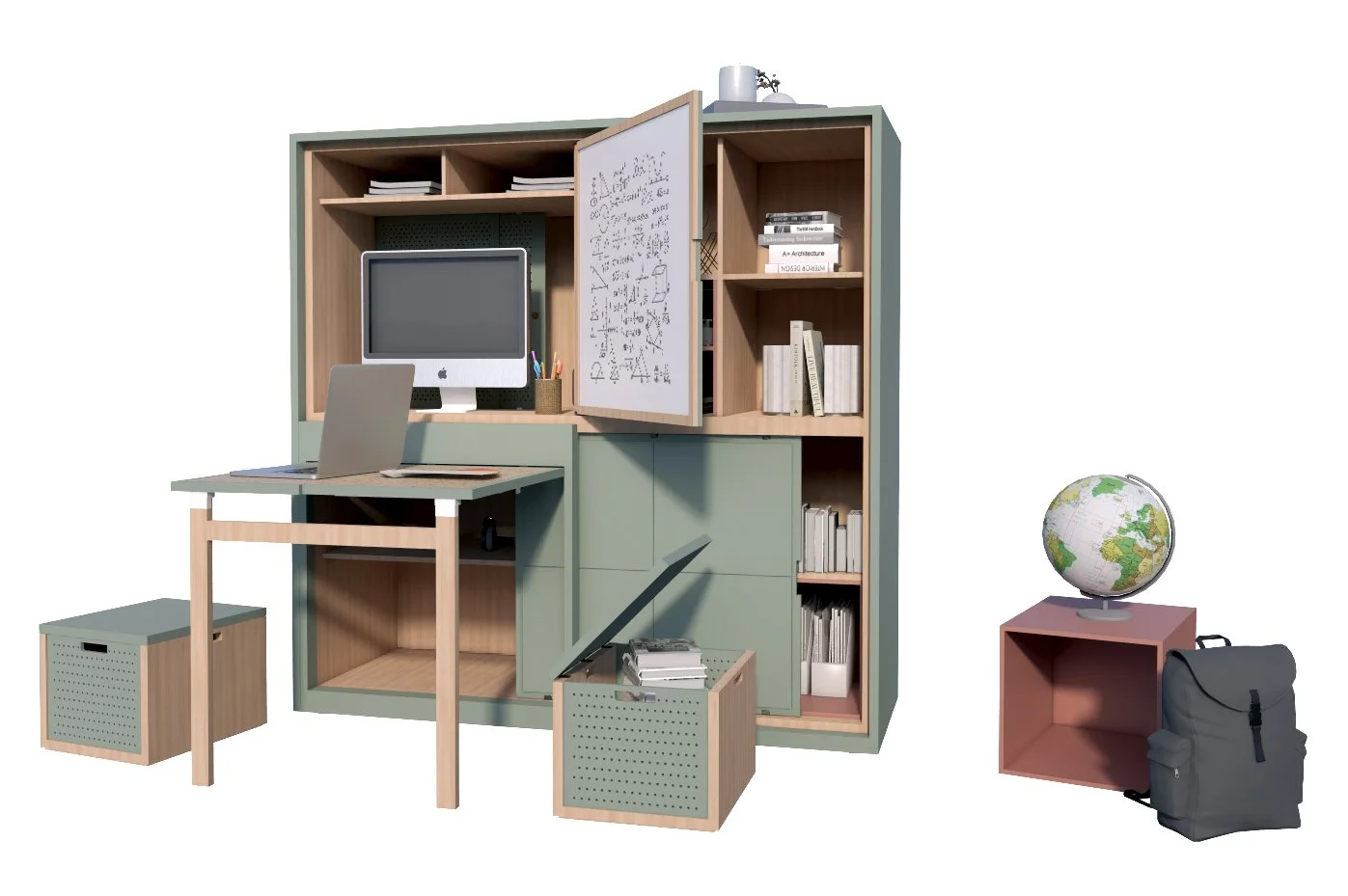Introducing our winning entry for the 2025 FORM Competition
I’m pleased to share that Noyes Balance, the modular furniture piece I co-designed with fellow Yorkville University student Stacy-Ann Matthews, was awarded second place in the 2025 FORM Student Innovation Competition presented by Formica Corporation.
Our participation began with a desire to create something meaningful and functional. As mature students balancing academic, professional, and personal commitments, Stacy-Ann and I recognized a common challenge in today’s home workspaces: flexible, adaptable environments supporting productivity and well-being.
Project Overview
Noyes Balance was conceived and developed in response to the 2025 FORM Student Innovation Competition theme: Designing for Wellbeing. As mature students balancing academic, professional, and home life demands, my teammate Stacy-Ann Matthews and I sought to create a furniture solution that promotes flexibility, order, and mental well-being in multifunctional living spaces.
Drawing inspiration from the classic 15 Puzzle—invented by Noyes Chapman in 1880—the design incorporates modular, movable panels that reveal or conceal workspace components. The goal was to create an interactive, adaptable piece that encourages users to transition smoothly between work and personal time while promoting control and tranquillity.
Design Approach
Our design process was rooted in research, strategy, and storytelling. We applied principles of neuroaesthetics and evidence-based design to explore how physical interaction, texture, and colour influence mood, cognitive function, and emotional health. Rather than following purely aesthetic trends, we approached the project to create an environment supporting practical needs and psychological well-being.
In the early stages, we engaged in extensive inquiry into user experiences, reflecting on our own needs and gathering informal feedback from peers facing similar challenges in home workspaces. These insights shaped key features such as the sliding panels, the ability to conceal or reveal elements, and the incorporation of tactile finishes to enhance user interaction.
Material Selection
The material palette was curated to balance calming aesthetics with durability and function:
FENIX® 0794 Verde Kitami: Selected for its soft sage green hue, low light reflectivity, soft-touch surface, and durability (anti-fingerprint and micro-scratch thermal healing).
Formica® 7412 Puregrain Planked Raw Oak: This product adds warmth and natural texture with a tactile, realistic wood grain.
Formica® 8238 Blush (matte finish): This material is used for removable inserts to introduce playfulness and signal interactive elements.
Everform® Solid Surface 766 Portofino Mineral: This mineral is featured on the flip-out desk surface for durability and aesthetic cohesion, tying together the colour palette’s natural tones.
Formica® 459 Brite White (Gloss): Applied to the writable surface concealed behind one of the sliding panels.
Earning second place among nearly 200 submissions has been an honour and a validation of our collaborative and research-driven approach. This project has reaffirmed my commitment to creating interiors that are not only visually compelling but also grounded in evidence-based design, sustainability, and inclusivity.
Stacy-Ann and I will be presenting Noyes Balance at NeoCon this June. I am also actively pursuing professional opportunities in commercial interior design to continue to develop projects that prioritize user experience, cultural awareness, and the promotion of mental and emotional well-being within the built environment.
I sincerely thank Formica and FENIX for this opportunity and everyone who supported us throughout this process.
—-
The case study outlines the entire process and thinking behind the project.



